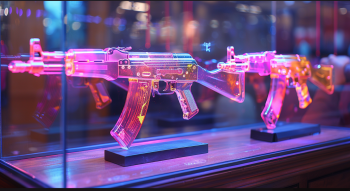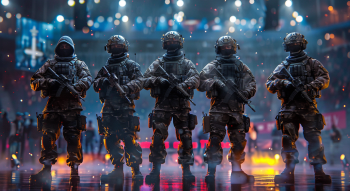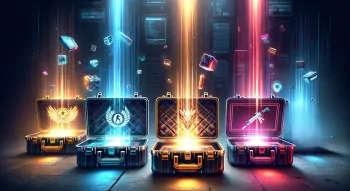Difference Between CS2 Tier-1 and Tier-2 Teams
Contents

If you’ve been playing CS for any length of time, you’ve surely heard about tiers for professional teams. However, there are no universally agreed upon criteria or ratings to evaluate teams in such a manner. Simply relying on Liquipedia’s CS tournament division can be quite misleading in this case, as there are lots of other aspects that influence CS2 team tiers.
For instance, what about consistency, which has always been the difference between lucky underdogs and real heavyweights? Can any squad with some big names in it be considered a tier-1 team? Or should they achieve some results and claim a decently high position in the HLTV’s ranking first? As you can see, the difference between CS2 tier-1 and tier-2 teams is not so easy to define
Let’s dive into this tricky discussion and try to understand how team tiers actually work. To make an accurate assessment, we’ll rely on the following criteria:
- Players / Roster;
- Tournament Participation;
- Results / HLTV Ranking Place;
- Organization / Management.
Tier-1 Teams in CS2
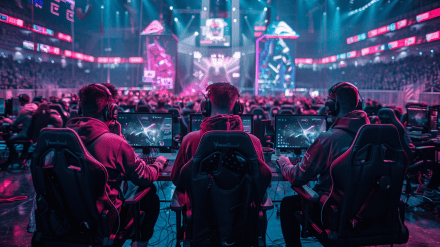
Tier-1, or S-tier, is the true elite of Counter-Strike, where only the best CS2 teams in the world play. Here’s the main factor that differentiate those pros from the rest of the teams tiers in CS2.
Players / Roster
Of course, tier-1 teams should have the top CS2 players rosters, usually having 1 or 2 (sometimes even more) world-class superstars. Those are consistent performers who regularly find their way to the annual HLTV’s top-20 ranking (or at least are on the edge of getting into it). ZywOo and Spinx from Team Vitality or ropz and broky from FaZe Clan are all good examples of what the best of the best look like.
Tournament Participation
Liquipedia divides tournaments into groups by their prize pool, with S-tiers required to have more than $250,000 in rewards (CS2 Majors, BLAST, IEM, ESL, etc.). Moreover, any S-tier event should have proven organizers and involve companies with big names to realistically attract any tier-1 teams.
Results / HLTV Ranking Place
HLTV’s ranking is pretty objective, based on the team’s latest results and statistics. Moreover, while this rating prioritizes the most recent results, it still takes into account the squad’s performance in the last year. According to HLTV, tier-1 teams must be regular playoff participants in the elite events, and claim a spot in the website’s own top 10 for a few months.
Organization / Management
Nowhere is the difference between what is tier-1 and tier-2 in CS2 more evident than in team management. Elite teams always have a coach, an analyst, or even a dedicated psychologist, broad marketing staff, and many more. The salaries for the tier-1 team members start at a few thousand bucks monthly and go up to a few dozen thousands for the stars like s1mple or NiKo.
Tier-2 Teams in CS2
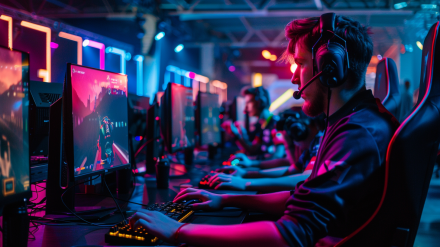
Clearly defining the difference between tier-1, tier-2, tier-3 teams in Counter-Strike 2 is quite challenging, and this is especially evident when assessing squads of the second tier.
Players / Roster
Many tier-2 teams have great rosters, but not on the level of their tier-1 counterparts. Such a squad can include one or more former superstars who cannot deliver reliable results at the moment, or a few young players who had their moments at the recent events, but struggle on the top level of play. The only real difference between players of tier-1 and tier-2 teams is consistency—the latter might even have more talent on their roster, but don’t deliver as regularly.
Tournament Participation
The natural habitat for a tier-2 team is an A-tier event, where they can reach playoffs or even later stages. Still, these teams often aim to participate in the S-tier, but rarely receive direct invites and instead have to pass a qualification. Since those can be pretty tough and unpredictable due to crazy bo1 elimination matches, tier-2 squads miss the majority of elite events during the year.
Results / HLTV Ranking Place
Tier-2 teams usually headline the news from big events after shocking victories over the more experienced competitors. Nonetheless, they rarely participate in S-tier event playoffs, which affects their ranking. It can fluctuate significantly between HLTV’s top 10 and top 30, depending on the team’s performance in recent elite tournaments.
Organization / Management
Some tier-2 teams have excellent management, while others don’t have the funds necessary for that level of support. Still, their players can expect decent salaries (a few thousand dollars is usually enough for them to make CS their full-time job); a coach (and maybe an analyst) reviews their games and devises training regimens while a few managers cope with the rest of the organizational stuff.
Tier-3 Teams in CS2

If you think that the tier-1, tier-2, tier-3 CS teams difference is huge, you’re wrong. Let us explain how it works.
Players / Roster
While there’s usually more than enough tier-2 teams to fill elite tournaments, the best players in tier-3 teams still get attention from the Esports heavyweights. In fact, most elite teams belong to the tier-3 level, and their players often receive offers from more proficient squads.
The best example of this rule is probably “m0NESY,” who was playing in the NaVi Junior squad but was bought by G2 for about $600k and immediately started showing excellent results. Another player from the same team, b1t, has joined the main Natus Vincere roster and went on to become one of the main stars in the squad, winning his first CS2 Major.
Tournament Participation
Fighting for the prizes between $10k and $100k is usually enough to get the attention of tier-3 players. Traditionally, they receive direct invitations for those events and fight intensely to get a ticket for A-tier tournaments.
Results / HLTV Ranking Place
Tier-3 teams are the real contenders in the B-tier events, but rarely can reach playoffs of the A-tier tournaments. The group stage of S-tier events seems to be the limit for most of those, and still adds a few extra dozen points to their HLTV’s ranking. Since teams outside the top 30 usually have less than a hundred HLTV points, just a few tournaments can cause series fluctuations inside the top 100.
Organization / Management
Interestingly, there are a few tier-3 teams with near-elite organization levels, especially if a new brand comes to the competitive scene with solid investments, or it's a youth squad of a popular clan tag. The typical organization at this level includes the presence of a coach, and a solid salary (above $1,000) for the players who are waiting for a breakthrough in their careers.
Tier-4 Teams in CS2

Finally, we came to the most significant difference between CS2 team’s tiers, and a level of play which typically signifies that a squad has a long way to go to achieve success.
Players / Roster
If you know all competitive maps, their firing angles, up to 20 grenade lineups on each, and can cooperate with other players on FACEIT—congrats, you can probably play in a tier-4 team! Of course, you should also have a confident FACEIT level-10, and have enough motivation not only to crush opponents’ heads but also learn team play patterns and train performing them.
Tournament Participation
C-tier events are competitions with up to 10 thousand dollar prizes, and there are dozens of them every week. There are no direct invitations on this level, but leaving an application for participation on FACEIT or ESEA and being on time for qualifications can be half of the job to get into one. Of course, if the team is hungry and talented enough, they can qualify for the B-tier events with up to $100k in funds.
Results / HLTV Ranking Place
Winning a few thousand dollars as a team per month is a realistic target, and having matches tracked by HLTV is an achievement in and of itself. Sometimes, tier-5 teams can even make an appearance in the playoffs of B-tier events, earn a few dozen points, and end up in the top 100+ on HLTV.
Organization / Management
Traditionally, tier-4s have their IGL also fill the role of a manager and coach, or have those roles float between other squad members. Having a unique team name and logo is enough for a HLTV identification.
*****
Do you agree with our definition of what's the difference between tier-1 and tier-2 teams? Tournament tiers by Liquipedia and HLTV may be good and objective parameters, but they often fail to reflect the intricacies of the struggle for dominance that constantly shifts the CS competitive landscape. In any case, accurately determining the team’s tier is a challenging task, and we hope you’re better equipped to do so now.


